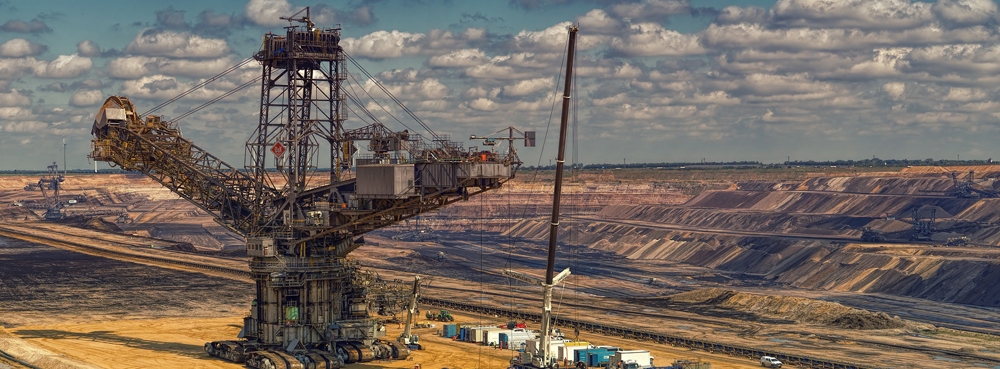Drilling Down Into Chemical Hazards In The Mining Industry With Hughes Safety
Industries worldwide rely on the steady supply of minerals and metals harvested by the mining industry such as coal, iron ore, bauxite, and potash

Though the final products of mining may not be hazardous, there are many chemical risks that mine workers are exposed to daily.
Mineral production involves a series of physical and chemical processes. These occur throughout the excavation of ore through to the production of metal or material in its marketable form. As processing plants often operate closely with mines and quarries, the initial mineral refinement and preparation activities carried out by these plants are considered to be part of the wider mining process.
The most common chemical-related injuries reported in the mining industry are burns caused by acids and alkalis. The roles often listed amongst injured parties include cleaning plant operators, media operators, boney preparation plant operators and crusher workers.
Acids and alkalis used in mining are recorded by the Mine Safety and Health Administration (MSHA) as including wet cement, wet grout, shotcrete, lime-cement dust, trona and rock dust.
Exploration drilling
Due to its ability to dissolve most oxides and silicates, hydrofluoric acid is used in the analysis of core samples taken during exploration drilling. These samples are necessary to understand the bulk properties of underground rock and determine whether there is mineable material.
Hydrofluoric acid is a highly corrosive material and a powerful contact poison. Instant flushing is required after all spills and splashes, even though symptoms of hydrofluoric acid may not always be immediately evident. In addition to the severe skin burns it can cause, once absorbed into blood through the skin, hydrofluoric acid reacts with blood calcium and may cause cardiac arrest.
Beneficiation
Methods for physically separating ore from surrounding material include complex processes. Chemicals and reagents used in the separation process often cause irritation or corrosion when coming into contact with skin.
Common beneficiation processes include:
• Solvent extraction – the separation of one or more substances from a mixture by treating an aqueous solution of the mixture with a solvent that will extract the required substances, leaving other detrital materials behind. Some commonly used solvents include hydrocarbons that can cause skin irritation after prolonged exposure.
• Leaching – the process of extracting a soluble metallic compound from an ore by selectively dissolving it in a suitable solvent such as water, sulfuric acid, or sodium cyanide solution. Upon contact, sulfuric acid can cause severe chemical burns and even secondary thermal burns. It is extremely dangerous even at moderate concentrations.
• Refining – electrolytic or chemical processes that produce a pure metal. Acidic copper sulphate solution is used in electrolytic refining of copper and is a skin irritant.
• Flotation – the process by which chemicals are added to crushed ore-water slurry to recover the mineral. A foaming agent is also added. A complex system of reagents is used, including basic types of compounds such as pH modifiers, collectors, and activators. Highly corrosive chemicals such as lime, caustic soda and sulfuric and hydrochloric acid are often used as pH modifiers and can cause severe chemical burns if spilled or splashed.
Mineral waste disposal
The waste or unwanted minerals (tailings) separated from the valuable minerals are routinely disposed of in a tailings pond near a mine site. The associated water is typically recycled, treated, and used in subsequent mining or processing.
Those involved in the water treatment process could be exposed to hazardous chemicals contained in the tailings as well as chlorine used to clean the wastewater.
Challenging environments
Mining facilities are often located in remote areas, meaning that a consistent mains water supply is not always available, making the provision of emergency safety showers a challenge. Additionally, most mining occurs in environments that experience extremes in temperature.
Safety shower considerations
• Emergency tank showers are the simplest solution to meeting ANSI and EN standards with the ability to provide water at the correct pressure and temperature even in remote locations. For cold climates, immersion heated tank showers maintain the water at a tepid temperature so that it does not freeze or cause hypothermia when activated. For hot climates, chillers can be fitted to tank showers to ensure that the water does not scald or further injure a casualty.
• Freeze protected safety showers are also ideal for locations that experience low ambient temperatures. These units are designed to prevent the water in the safety shower from freezing rendering it inoperable in the event of an emergency and damaging the unit.
• Temperature controlled safety showers can ensure the provision of tepid water where a hot water supply may not be available. The showers in this range have an integral heated water tank which can also be used as a warm water source to feed other emergency shower units in the local vicinity.
• Self-draining safety showers are an alternative solution for hot climates where standing water can reach temperatures as high as 50°C (122°F). These showers are designed so that standing water is allowed to drain away from the standpipe to ensure it doesn’t heat up in the sun.
• Mobile safety showers are more suitable for applications where a hazard moves or as a secondary supplement to permanent plumbed in safety showers.
To ensure spills are flushed from the skin and eyes quickly to best minimise injury, emergency safety showers must be located within 10 seconds of a hazard. However, if a chemical is particularly dangerous, the equipment should be placed immediately adjacent to the hazard.
Emergency safety showers and eye/face wash equipment must also be situated in a prominent position, clearly visible, well-lit and free from any obstructions.
CONTACT
Kevin Whalley
Hughes Safety Showers Ltd
sales@hughes-safety.com
www.hughes-safety.com
+44 161 430 6618
Tuesday 21 January 2020 / file under Chemical | Environmental | Mining | Safety



